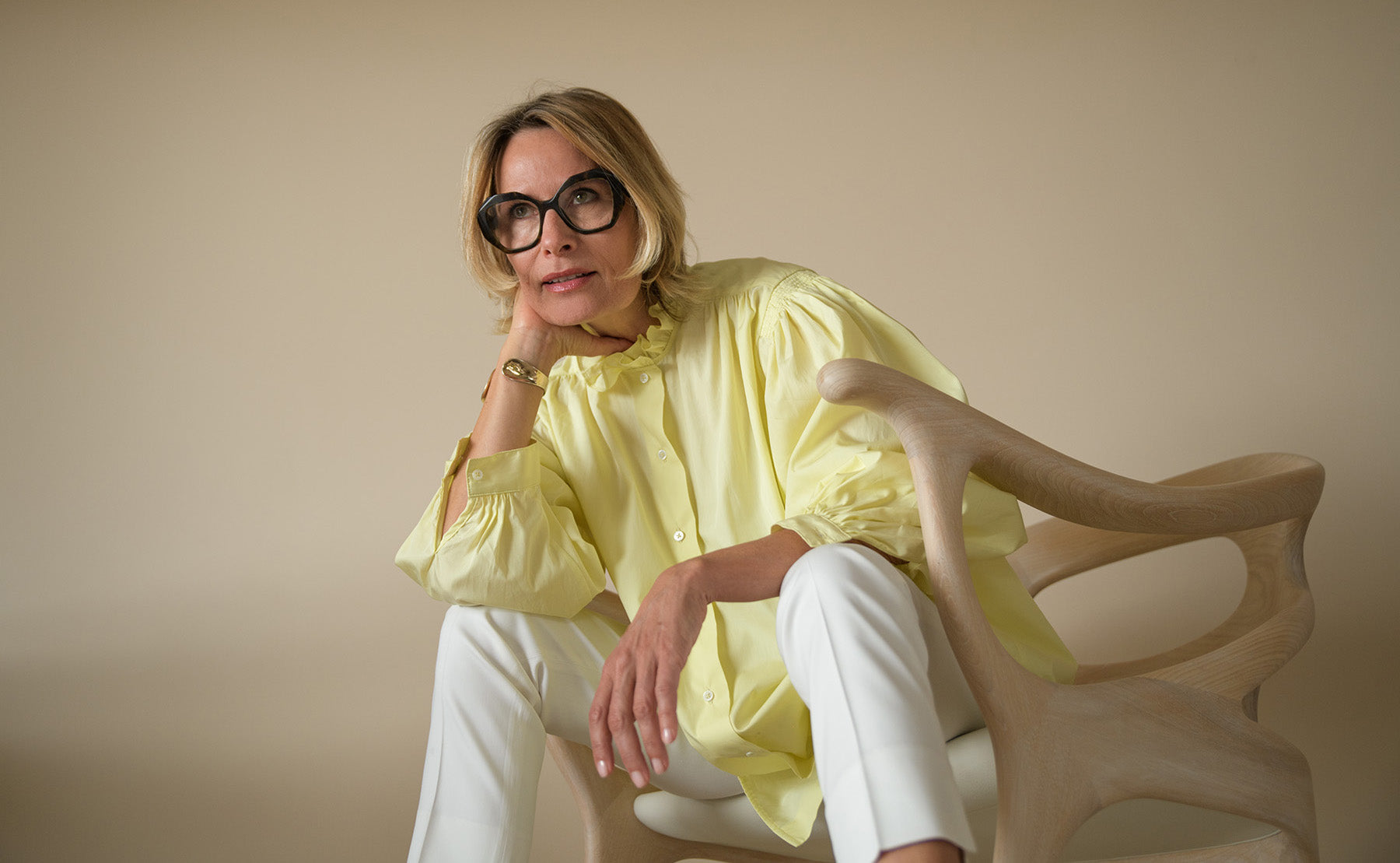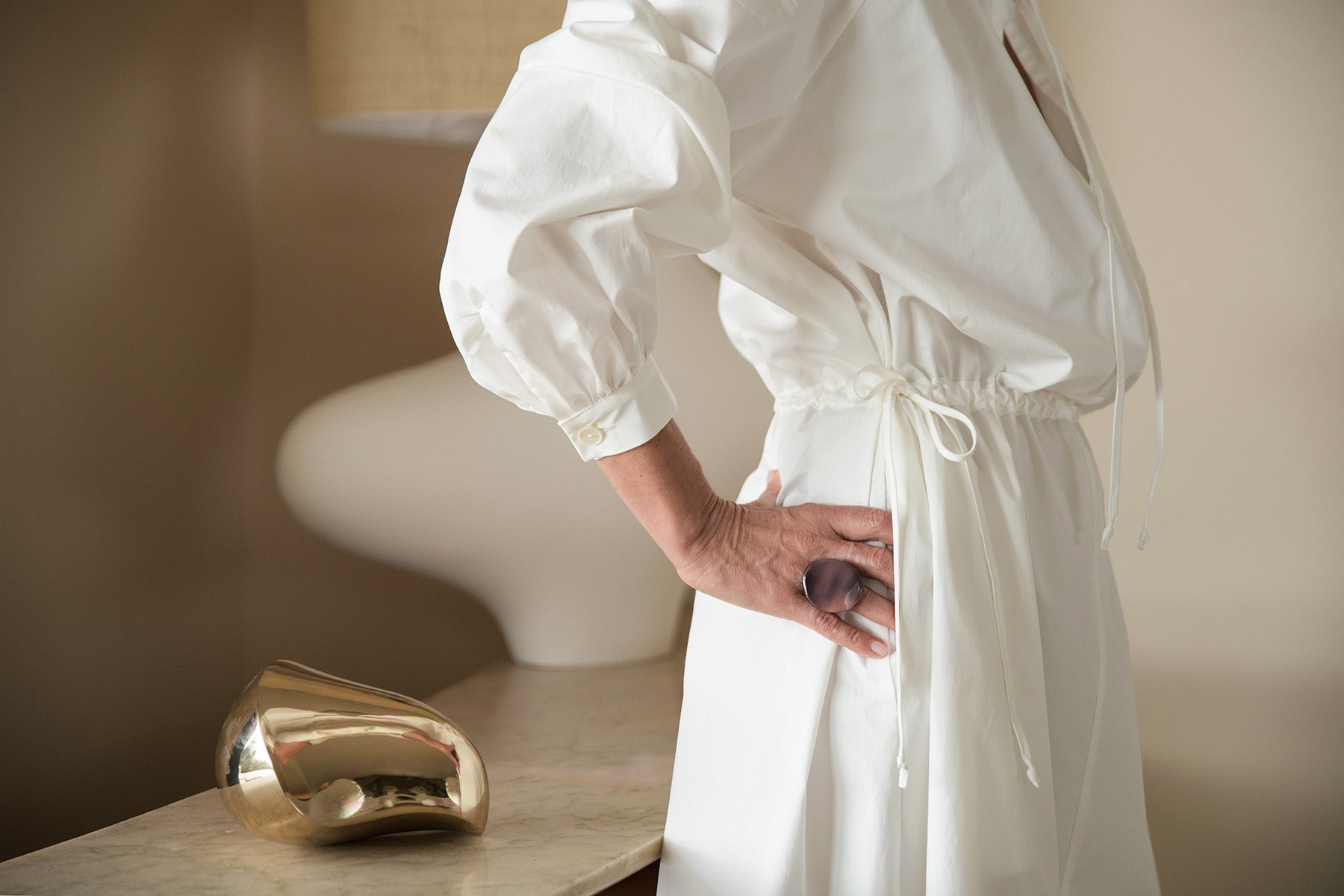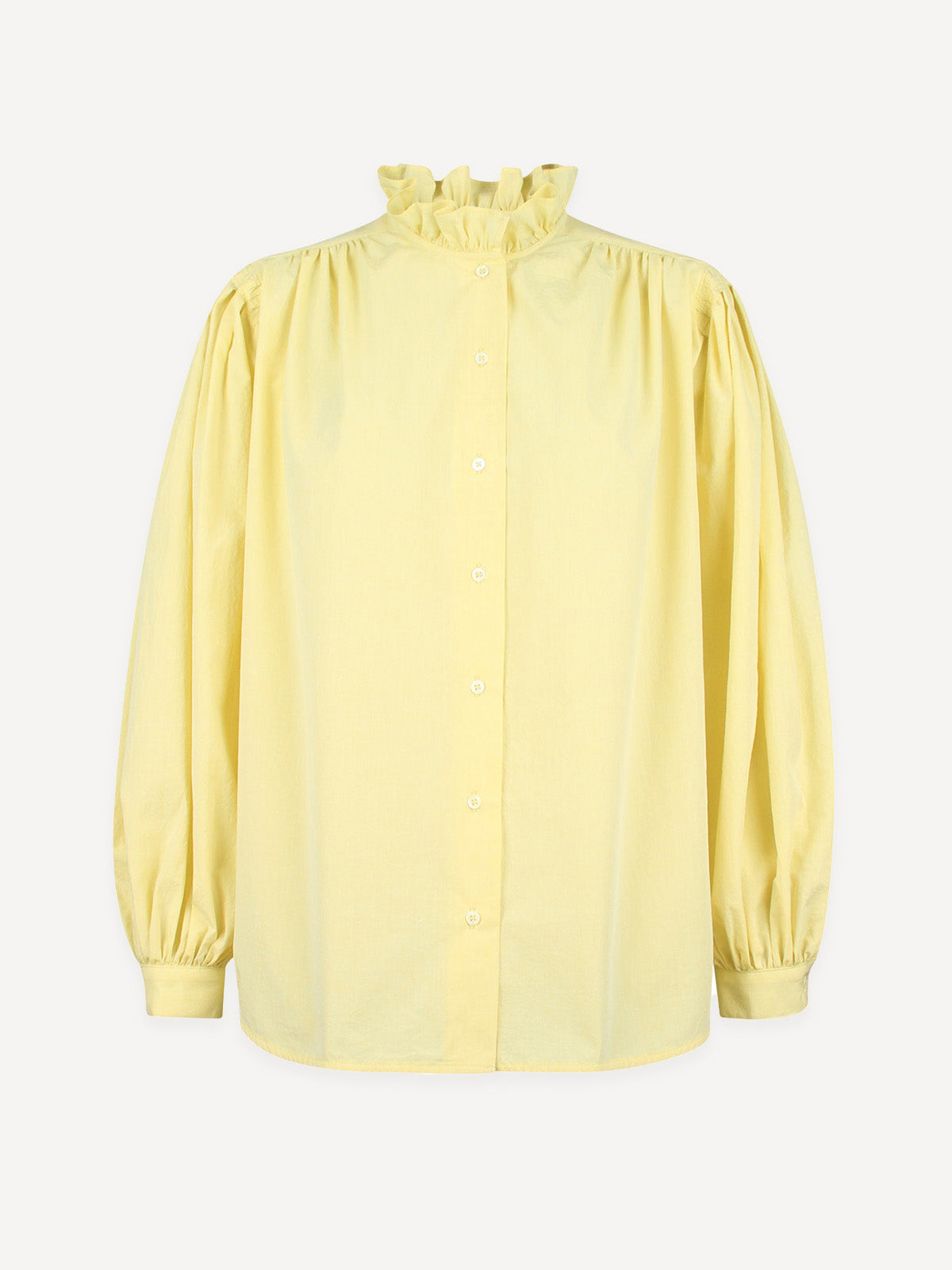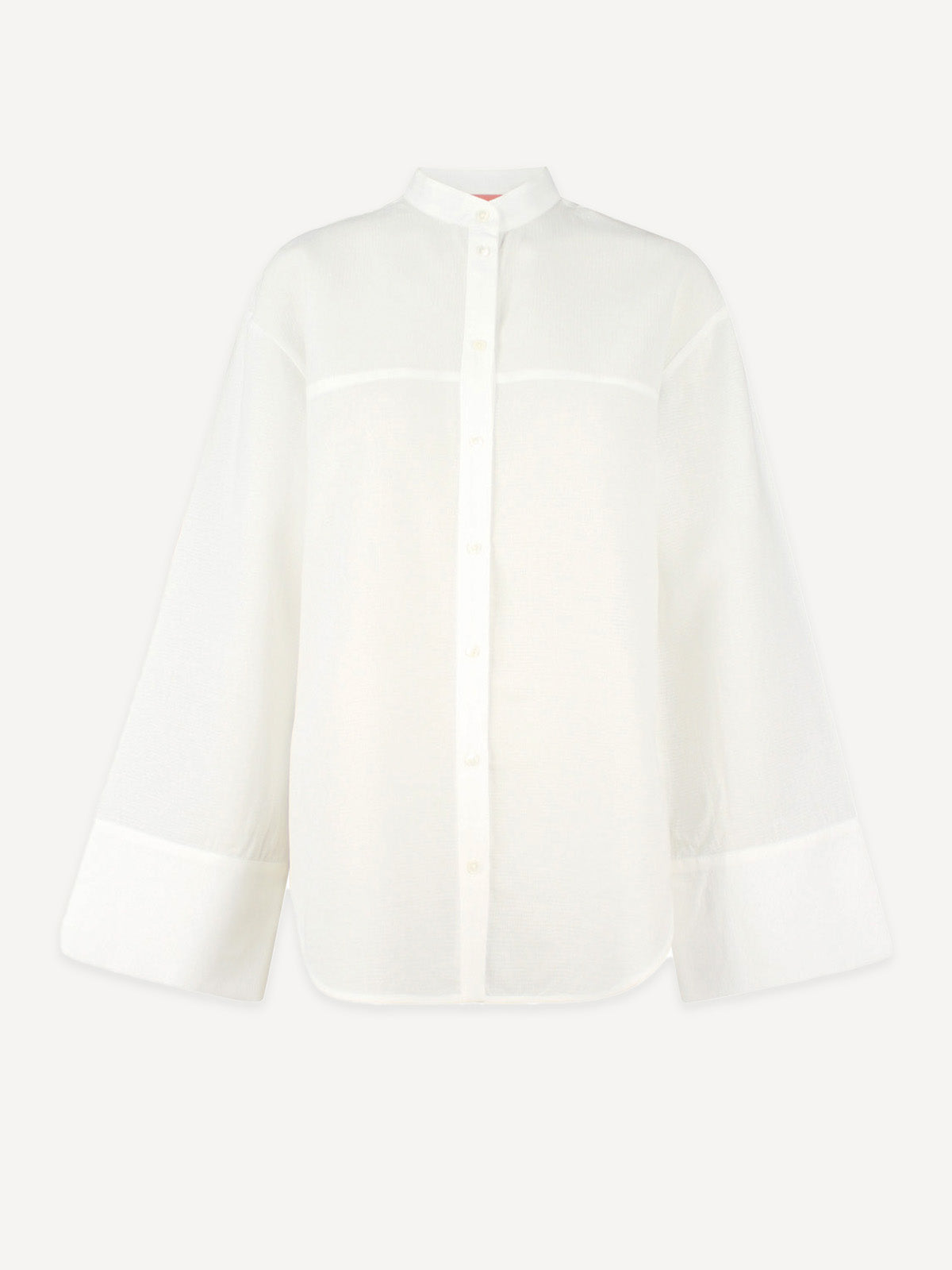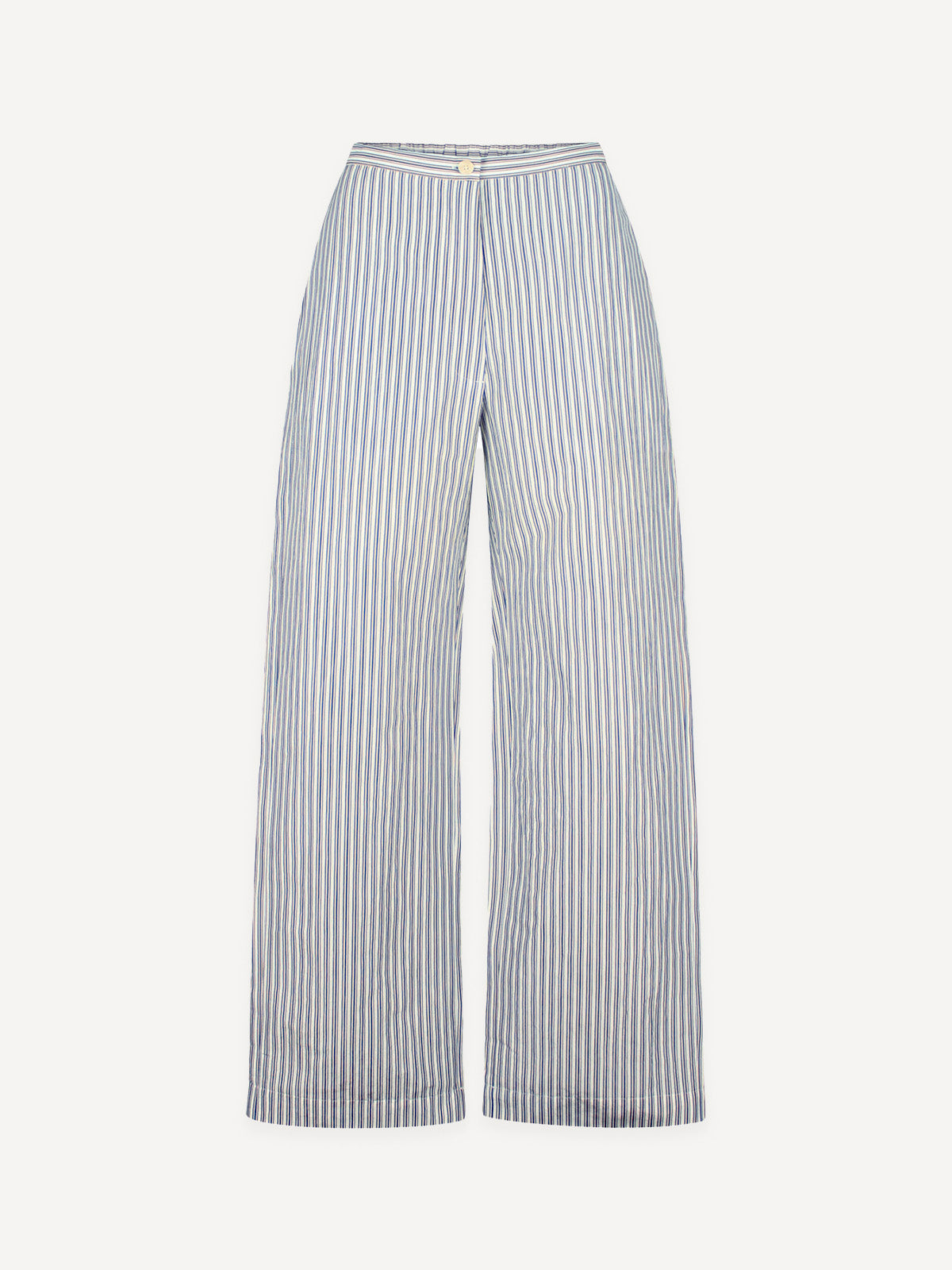MEET HELLE DAMKJÆR
In the hillside calm of Cannes, Danish ceramicist and designer Helle Damkjær works with a deep sensitivity to shape, material, and movement. With a background that spans Parisian haute design and collaborations with iconic houses like Georg Jensen and Guerlain, her work reflects a refined balance between sculptural form and Nordic minimalism.
Whether in porcelain, metal, or textile, her pieces carry a quiet rhythm — an intuitive dialogue between hand and form, structure and softness. We had the privilege of spending time with Helle at home, capturing her among her sculptural pieces. In conversation, she shared thoughts on her approach to her craft, the role of art in today’s world, and the quiet therapy found in the act of letting go.
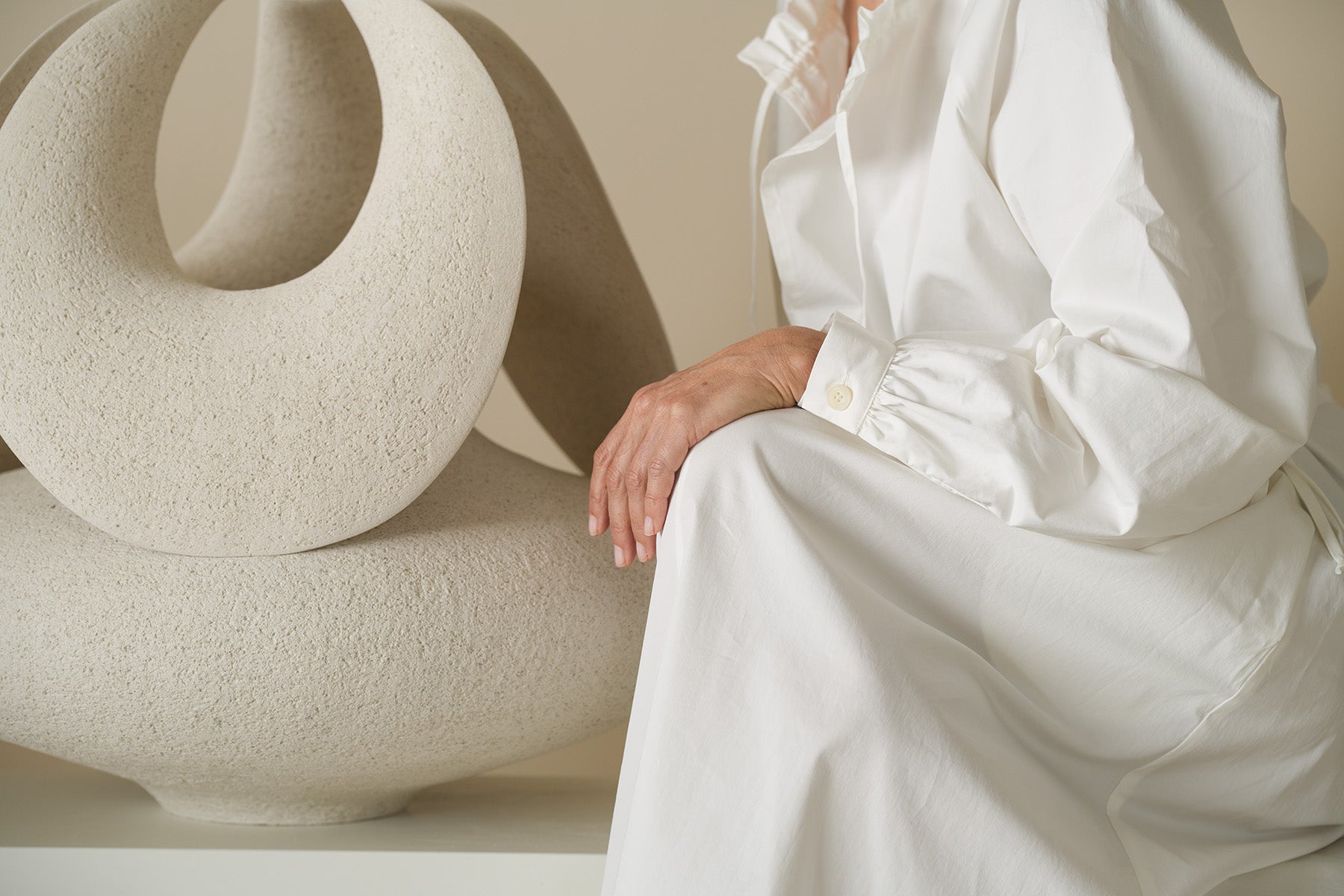
What does a normal day look like for you?
After years of living a cosmopolitan life, I now prioritize a more relaxed, slow-paced lifestyle.
These days, it's all about slowing down—connecting with nature, shopping at the local market, and embracing a more organic rhythm throughout the day.
No two days are exactly the same, but my week tends to revolve around similar activities—just in no particular order.
Yoga, working with clay, designing, answering emails, walks on the beach or in the forest... plus all the everyday things that keep life flowing.
What drew you to start working with clay?
I am a designer at the base and one day a friend invited me to come along and join a class with a renowned Canadian artist Kirstin McKirdy in Paris. I took her class once a week for about 2-3 years then stopped for more than 10 years to be a mother and continuing working was more than enough.
When I was commissioned to design the K Chair for Kitani in Japan, I returned to sculpture - not with clay however but over time, I began using clay again to create models for my design work. Eventually, my family and I spent a year in Kyoto, and it was there that I decided to fully dedicate myself to working with ceramics. From there, everything developed relatively quickly.

How does your creative process evolve when you are working on a new piece?
Working with clay is a very primordial process for me. I often start with a rough idea of what I want to create—but from there, it becomes a practice in letting go. I simply follow the flow, responding to the piece as it evolves. Each creation becomes the foundation for the next. It’s also deeply healing. I tend to be a bit of a control freak, but clay has taught me patience. It slows me down, grounds me, and reminds me that things don’t always need to go according to plan.
That lesson - learning to release control - has been one of the most valuable, and it’s something my daughter has also taught me in her own quiet way.
How has living in France influenced your artistic journey?
All the places I’ve lived have influenced me in one way or another. It’s like everything gets quietly downloaded to my hard drive. Paris definitely gave me a sense of elegance. But when it comes to my artistic style, I think it’s really about expressing my femininity - something I didn’t have much room for before.
For so many years, I lived in a very masculine energy through my work as a designer - always structured, in control, pushing forward. Now, it’s the opposite. I feel like I’m totally out of control when I create… in the best way. Whatever comes out is soft, curved, sensual, and elegant.

How does art and artisanal objects affect us as human beings?
We are energy - so when you work with a medium, whether it’s clay, painting, sculpting, or anything else, you merge with it. Art is energy too, which is why I believe we’re drawn to certain pieces - they resonate with our own vibration. Some artworks carry a powerful or captivating energy, others something more subtle. For me, I focus on creating a calming, harmonious energy in my pieces. That’s always been my intention, also in my design work.
What does it mean to you to feel well dressed?
Clothes can make you feel a certain way. That I felt very strongly when living in Japan where I was part of traditional ceremonies and was wearing a kimono where it took 3 hours to be prepared and dressed I felt the whole Japanese culture by just wearing a kimono. I felt, walked, and moved completely different. Clothes can make you feel beautiful, elegant, cool, or part of a “tribe” artistic, trendy, or sporty….Being well dressed is part of a self-expression that prolongs your universe or mood whether you’re conscious of it or not.
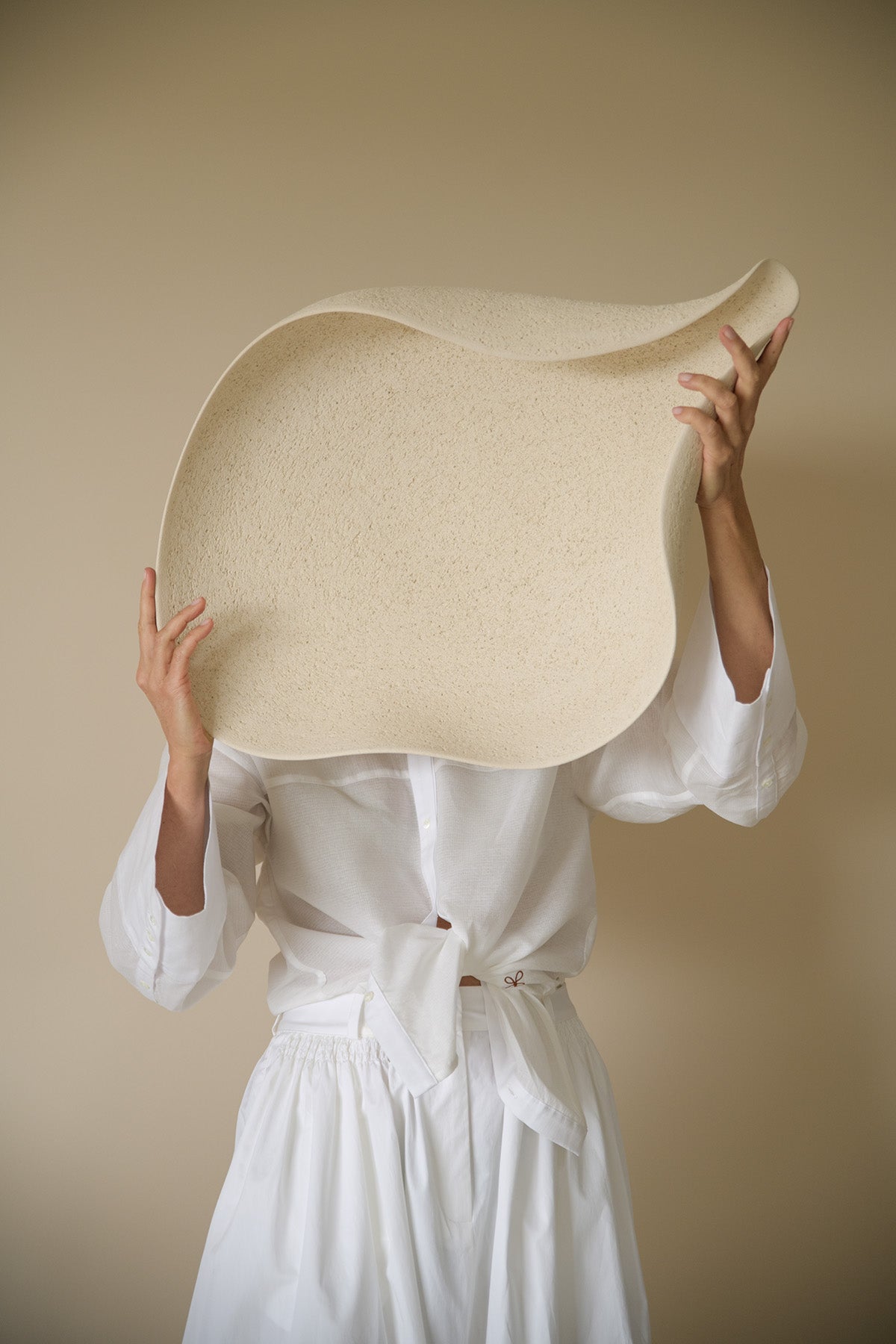
How would you define midlife? Have you felt comfortable or surprised by certain aspects of maturing?
Each stage of life has its own beauty.In midlife, there’s a freedom that comes with caring less about what others think — and that’s one of the nicest parts.
It’s definitely a time to embrace the autumn season of life, though I can’t say I’m entirely ready for it yet. I still feel like I have so much to give, and I’m eager to challenge myself further, which feels really important. Eventually, I’ll lean into this next phase as gracefully as possible.
What piece of advice would you give to your younger self?
We all carry more potential than we realize -and fear often stands in the way. Looking back, I think I wasn’t ready to fully embrace an artistic medium earlier in life, even if I had given myself that advice. There’s a time for everything.
In my earlier years, I had a blast -driven by curiosity, chasing exciting projects, and working with contemporary brands in major cities. But even then, beneath the surface, there was always a spiritual thread running through it all. Whether through yoga, retreats, or grounding books, I stayed connected to something deeper - something that now feels more present in my everyday life.
photos by marion villers for britt sisseck
If you'd like to see more of Helle's work, you can find her at www.helledamkjaer.net


